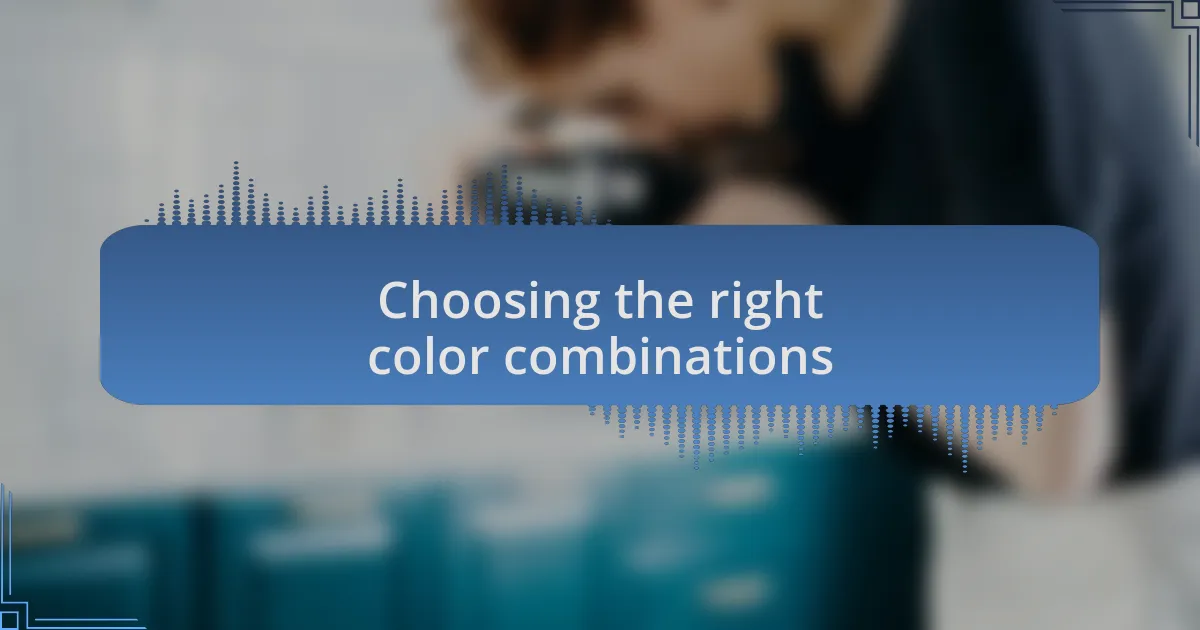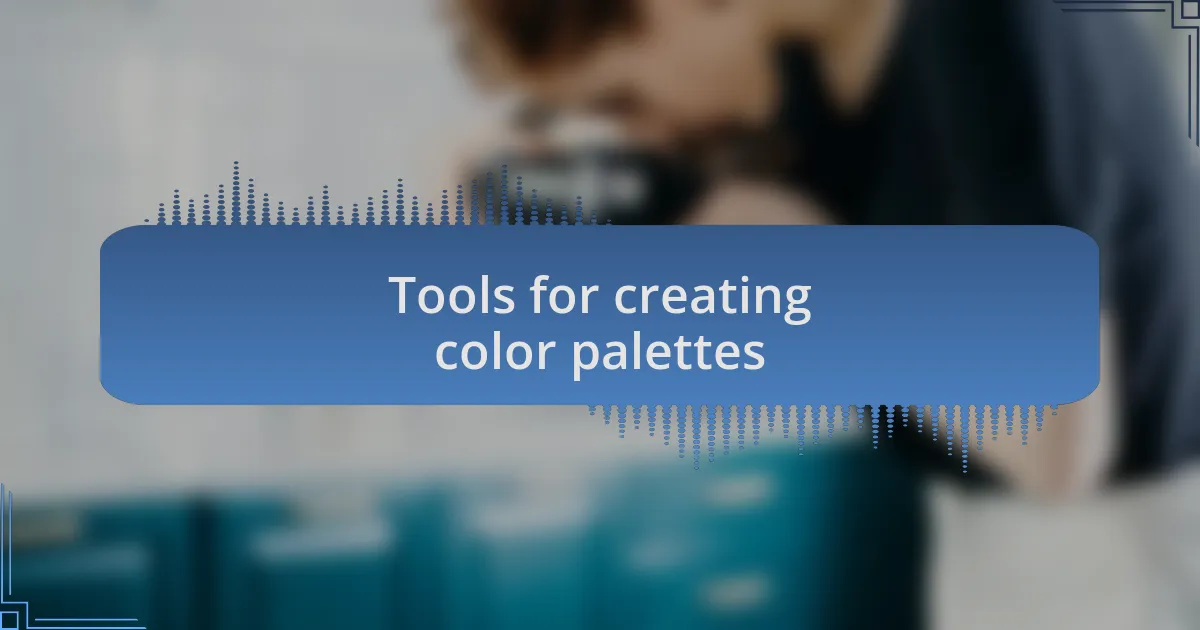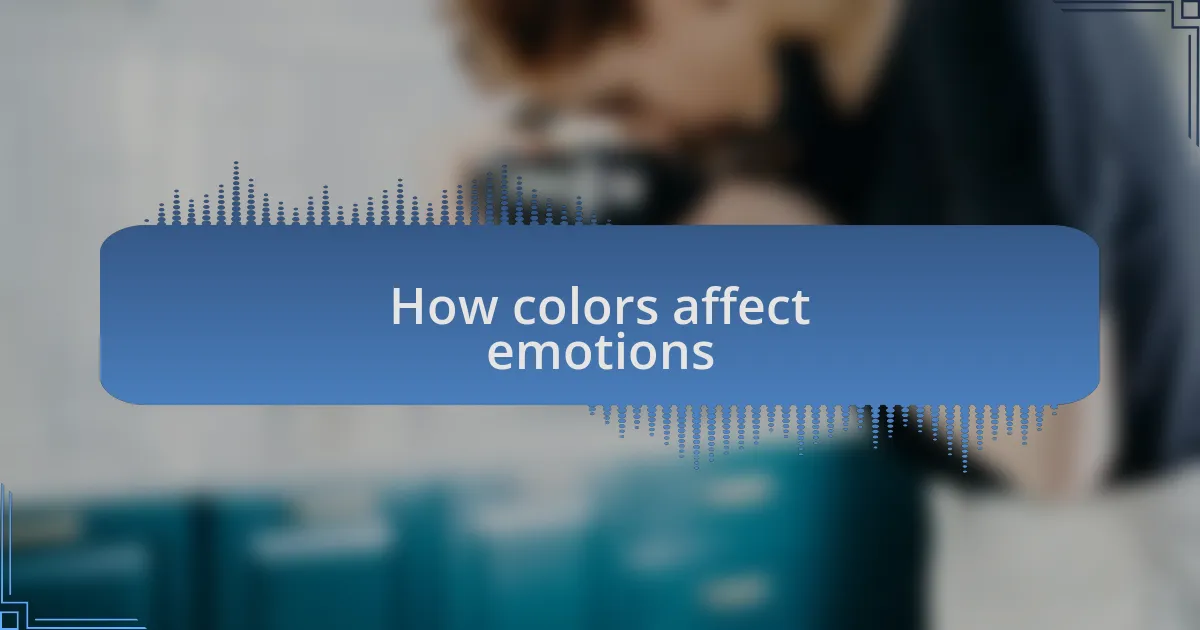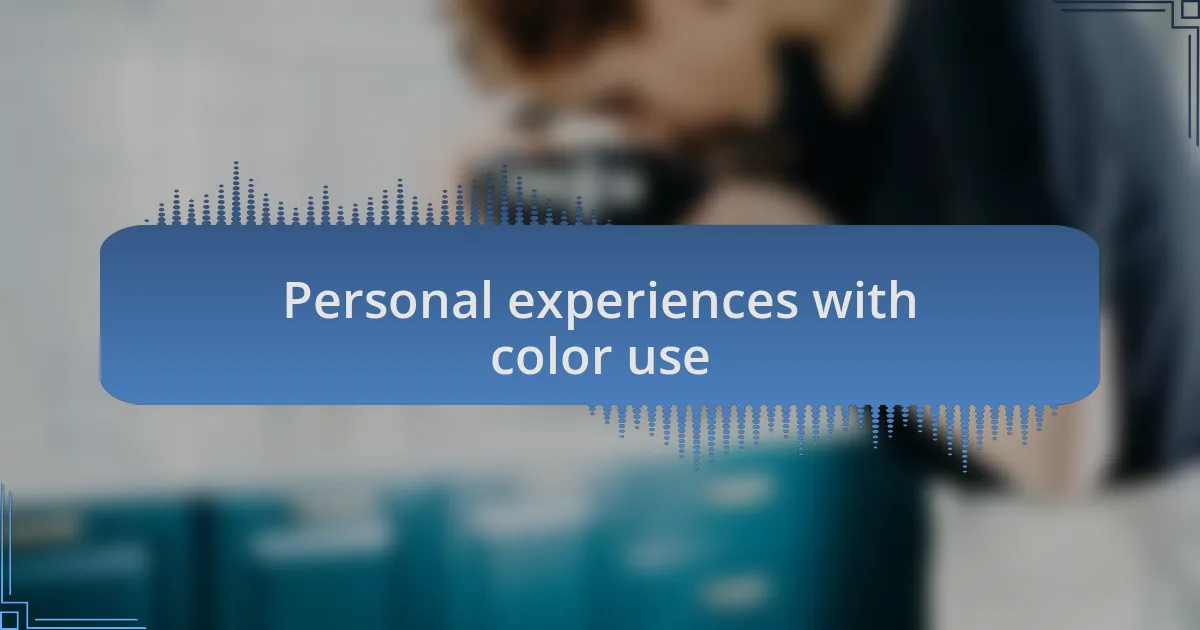Key takeaways:
- Color palettes impact emotions, convey brand identity, and enhance user experience on websites.
- The psychological effects of colors can significantly influence audience perception and engagement.
- Choosing harmonious color combinations is essential to create a balanced and effective design that resonates with target audiences.
- Utilizing tools like Canva, Adobe Color, and AI platforms can streamline the palette creation process and encourage creative exploration.

Understanding color palettes
Color palettes are more than just a selection of colors; they evoke feelings, express brand identity, and guide user experiences on a website. I remember the first time I chose a palette for my own project. I was pleasantly surprised by how the right combination could instantly change the mood of the entire site, creating an inviting atmosphere that resonated with my audience. Have you ever noticed how certain colors can make you feel energized, calm, or even nostalgic?
When selecting a color palette, it’s essential to consider the psychological impact of colors. For example, blue often conveys trust and reliability, while red can evoke passion and urgency. The interplay of these colors can significantly influence how users perceive your brand. I often reflect on how a single hue can drive the emotional response I want from users, almost like selecting the right music for a moment.
A well-constructed color palette creates harmony and visual appeal, making crucial elements stand out in a sea of content. I’ve found that sticking to a limited palette not only enhances aesthetics but also simplifies decision-making during the design process. It begs the question: how will you choose colors that not only look appealing but also connect with your audience on a deeper level?

Importance of color in design
Color plays a pivotal role in design, shaping how we perceive a brand or message. I recall working with a startup that struggled to communicate its mission until we revamped its color scheme. By switching to greens and earth tones, we not only highlighted sustainability but also fostered a sense of trust that resonated deeply with environmentally conscious consumers.
When I think about the power of color, I can’t help but reflect on its ability to trigger emotional responses almost effortlessly. For instance, consider how the bright yellows of a cheerful brand can uplift your mood, while cool purples can evoke feelings of luxury and sophistication. How can you leverage this emotional spectrum to craft a more compelling narrative for your audience?
Color also aids in navigation, helping users effortlessly find what they need on a website. I experienced this firsthand while redesigning a client’s online store; by using contrasting colors for call-to-action buttons, we improved click-through rates significantly. Isn’t it fascinating how a thoughtful color choice can turn a simple button into a powerful invitation?

Choosing the right color combinations
Choosing the right color combinations can be a game-changer for any creative business. I once consulted for a brand that initially used clashing colors; it felt chaotic and disorganized. By carefully selecting a harmonious palette of blues and grays, we cultivated an atmosphere of professionalism and creativity, allowing their message to shine through without distractions.
Think about the psychology behind color pairing. When I paired warm oranges with cool blues for a recent project, it created an inviting contrast that sparked curiosity while still feeling balanced. This combination not only drew attention but also conveyed a sense of innovation. How can you explore similar dueling colors in your design to evoke that perfect mix of excitement and calmness?
It’s essential to consider your target audience when choosing color combinations. I’ve learned that what works for one demographic can feel completely off for another. For example, a more playful color scheme with bright pinks may resonate with a younger audience, while deeper hues might attract a more mature crowd. Have you identified what emotions or associations your audience ties to different colors?

Tools for creating color palettes
There are several tools available online that can simplify the color palette creation process. Personally, I find Canva’s color wheel particularly user-friendly, allowing me to visualize colors side by side. When I was designing a website for a client, using this tool helped me find the perfect complementary tones, making the entire process smoother.
Another favorite of mine is Adobe Color, which offers various options to generate palettes based on different color harmony rules. I remember experimenting with a triadic color scheme for a branding project and feeling exhilarated as I watched my ideas come to life. Have you considered how the right tools might enable you to explore new creativity dimensions in your design work?
Lastly, Colormind is an AI tool I’ve used that generates unique color suggestions based on input images. I had a project where a client’s logo inspired a striking palette that felt both fresh and relevant. Using AI to create a foundation for my design sparked further ideas, proving that sometimes technology can ignite our artistic instincts. Have you tried out any AI tools for color choices yet?

How colors affect emotions
Colors have a profound impact on our emotions and can evoke specific feelings within seconds. I recall a time when I opted for a warm color palette of reds and oranges for a marketing campaign. The immediate response from the audience was overwhelmingly positive, as those colors radiated energy and passion, prompting a sense of excitement and urgency. What do you think your audience feels when they see the colors you choose?
On the other hand, I’ve also experimented with cool tones, like blues and greens, in various workshops and found they fostered a calm and welcoming atmosphere. I was amazed to witness how these hues encouraged open dialogue and creativity among participants, allowing ideas to flow more freely. Have you considered how the emotional atmosphere you create can influence the response of your audience?
It’s intriguing to think about how different cultures perceive colors, with meanings that can vary widely. For example, while white is often associated with purity in Western cultures, it represents mourning in some Eastern societies. Reflecting on a project where I had to select a color scheme for an international client, this knowledge shaped my choices considerably. Understanding these nuances can truly enhance the emotional connection with your audience, don’t you agree?

Personal experiences with color use
There was a moment when I redesigned my portfolio website, and I instinctively gravitated towards a vibrant color palette filled with bold pinks and yellows. To my surprise, the feedback was fantastic – visitors mentioned feeling joy and energy just from the colors alone. It made me wonder, have you ever noticed how a good color combo can instantly uplift your mood?
Conversely, I remember a time when I stuck to a monochromatic scheme while working on a corporate client’s site. The simplicity of greys and whites was meant to convey professionalism, but I found it lacked warmth, leaving visitors feeling detached. This experience taught me that even in more serious contexts, a splash of color can create a connection that pure neutrality often fails to achieve.
Another instance that stands out was while creating promotional materials for a community event. I chose earthy tones like deep browns and greens, aiming to evoke a sense of trust and community. The positive engagement was remarkable. Participants felt more inclined to join and connect, which made me realize: how often do we overlook the potential of colors to foster community and inclusivity?

Tips for effective palette application
To apply a color palette effectively, start by considering your brand’s personality. When I was developing a branding strategy for a local bakery, I leaned into soft pastels like mint green and lavender. These choices not only matched the whimsical nature of their desserts but also created a warm, inviting atmosphere on their website that resonated with their target audience. Have you thought about how your colors can embody the essence of your brand?
Balance is crucial in palette application. I once worked with a client who wanted to use a bold red as the primary color for their tech product site. While red can denote excitement, I advised incorporating cooler grays and whites to temper its intensity. The end result was striking yet approachable, showcasing that sometimes, less is more when it comes to visual impact. Have you experimented with balancing vibrant and muted tones in your designs?
Lastly, always test your palette against various backgrounds and display methods. I recall launching a campaign for a nonprofit organization where we overlooked how colors appeared on mobile devices. The bright yellow we used looked fantastic on desktops but appeared washed out on phones. This taught me the importance of adapting color usage based on real-world contexts. What steps are you taking to ensure your palette is versatile across different platforms?